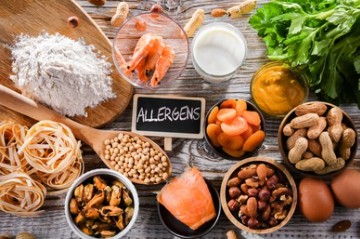The main sources of animal-derived food allergens are milk, eggs, and seafood (fish and shellfish). Milk allergy (CMA) is a common disorder in infancy and childhood. Eggs are the other food most frequently reported to cause allergic reactions in children. Allergy to proteins and glycoproteins of animal origin is now a significant public health problem affecting children and adults. Exposure to animal allergens is a critical factor in the development of allergy, especially in allergic airway diseases such as asthma and rhinitis. The major animal allergens share a common protein profile, as most inhaled mammalian allergens belong to the lipid-transporting protein and serum albumin families. The development of methods for testing a variety of animal-derived food allergens will facilitate more rapid and widespread detection and exploration of new allergens.

Our skilled scientists have developed a wide range of platforms for detecting animal allergens in food, including protein-based methods, DNA-based methods, and LC-MS/MS. In addition, we established relevant animal models to predict possible allergic triggers, identify possible mechanisms for establishing allergic pathways, and test new treatments.
Mice are the primary laboratory animals used to study the development of many diseases. They are often favored for their size, short reproductive cycle, and ease of housekeeping, as well as their relative ease of genetic manipulation, compared to larger models. We have successfully studied mouse food allergy models in several strains, including C3H/HeJ, BALB/c, C57/BL6, and DBA/2.
Pigs, dogs, and sheep. Some of the key advantages of using large animal models include their promiscuous nature, allowing for more comparative studies with humans, the ability to perform a series of experiments in the same group of animals, and their relative longevity, allowing for more relevant studies of chronic diseases and long-term evaluation of specific therapies.
As a global company for allergen detection, Lifeasible specializes in the detection and quantification of specific animal-derived food allergens, including species-specific allergen proteins and species-specific DNA. We offer testing for egg allergens and milk allergens in food.
| Detection Techniques | Allergens in Eggs |
| PCR Technique | Egg residues in food. |
| Protein-Based Techniques | In egg whites: egg-like mucin, ovalbumin, egg transferrin, and lysozyme. In egg yolk: HDL and LDL, photovitamin and viologen. |
| Mass Spectrometry | Lysozyme in cheese samples. Egg residues in red wine. |
| Detection Techniques | Allergens in Milk |
| Molecular biology methods | Determination of the percentage of milk in the mixture. |
| ELISA Coupled Separation Technique |
Casein: αs1-, αs2-, β- and κ-casein. Whey protein: β-lactoglobulin (β LG), α-lactalbumin (ALA), immunoglobulin (Bos d 7), bovine serum albumin (BSA), and trace lactoferrin. |
Lifeasible is committed to providing professional and customized solutions for detecting animal allergens in food to customers worldwide. We look forward to working with you, and you will benefit from our one-stop shop for everything from testing and reporting to the highest standards of post-analysis. If you are interested in our services, please feel free to contact us for more information.